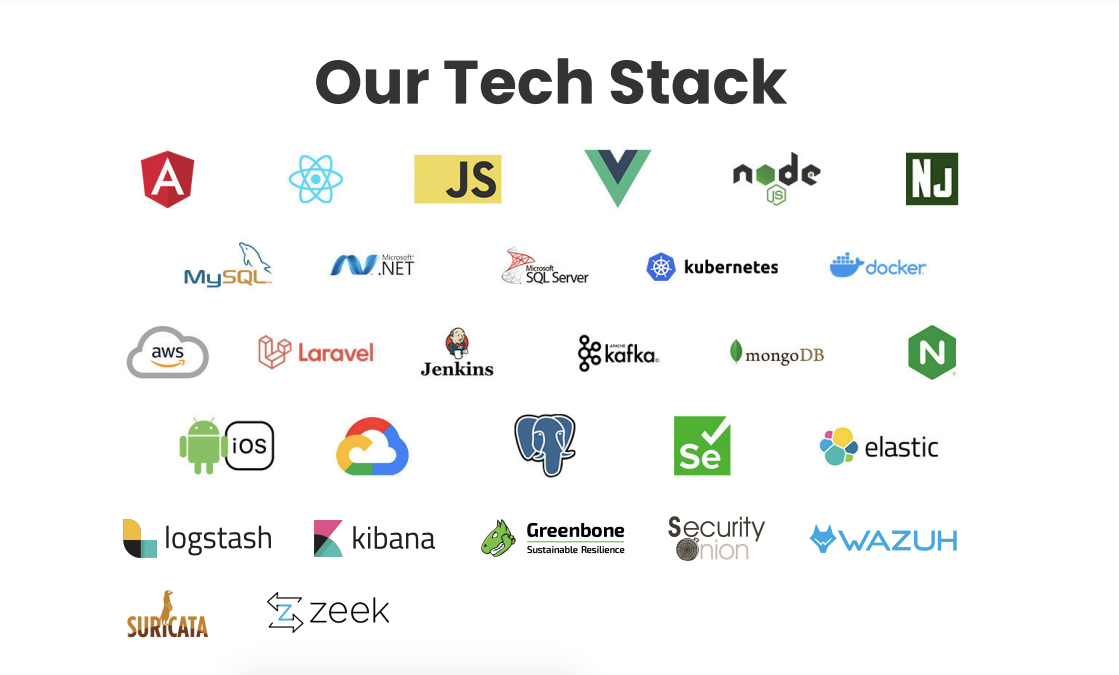
The Best Tech Stack of 2024
Introduction
As we move further into 2024, the technology landscape continues to evolve at a rapid pace. Choosing the right tech stack is crucial for developing scalable, efficient, and maintainable applications. This document explores the best tech stack for 2024, focusing on front-end, back-end, databases, DevOps, and other essential tools.
Front-End
React.js
React.js remains a dominant force in front-end development due to its component-based architecture, virtual DOM, and strong community support. It allows developers to build interactive and high-performance user interfaces.
Next.js
Next.js, a framework built on top of React.js, provides server-side rendering, static site generation, and other advanced features. It simplifies the development process for both single-page and multi-page applications.
Tailwind CSS
Tailwind CSS is a utility-first CSS framework that offers a modern approach to styling. It enables developers to rapidly build custom designs without writing traditional CSS, making the development process faster and more consistent.
Back-End
Node.js
Node.js continues to be a popular choice for back-end development due to its non-blocking, event-driven architecture. It is particularly well-suited for building scalable network applications and real-time services.
NestJS
NestJS is a progressive Node.js framework that enhances productivity with its modular architecture and TypeScript support. It is designed for building efficient and scalable server-side applications.
Django
For Python enthusiasts, Django remains a robust framework. It offers a "batteries-included" approach with a wide array of built-in features, including an ORM, authentication, and an admin panel.
Databases
PostgreSQL
PostgreSQL is an advanced, open-source relational database known for its robustness, scalability, and compliance with SQL standards. It is suitable for handling complex queries and large datasets.
MongoDB
MongoDB is a leading NoSQL database that excels in flexibility and scalability. It is ideal for applications that require a flexible schema design, such as real-time analytics and content management systems.
Redis
Redis is an in-memory data structure store used as a database, cache, and message broker. It is known for its high performance and support for various data structures.
DevOps
Docker
Docker has revolutionized the way applications are deployed and managed. It allows developers to package applications into containers, ensuring consistency across different environments.
Kubernetes
Kubernetes is the leading container orchestration platform. It automates the deployment, scaling, and management of containerized applications, making it easier to maintain complex infrastructures.
GitHub Actions
GitHub Actions is a powerful CI/CD tool integrated into GitHub. It enables automated testing, building, and deployment of applications directly from a GitHub repository.
Other Essential Tools
TypeScript
TypeScript, a superset of JavaScript, adds static typing to the language. It helps catch errors early in the development process and improves code maintainability.
GraphQL
GraphQL is a query language for APIs that allows clients to request exactly the data they need. It improves the efficiency of data fetching and reduces the amount of data transferred over the network.
Jest
Jest is a comprehensive testing framework for JavaScript applications. It offers a great developer experience with features like snapshot testing and parallel test execution.
Conclusion
The tech stack for 2024 emphasizes flexibility, scalability, and developer productivity. By leveraging these technologies, developers can build modern applications that meet the demands of today's fast-paced digital environment.
This document outlines the best tech stack for 2024, focusing on the latest trends and tools in web development. Whether you're a front-end, back-end, or full-stack developer, these technologies will help you stay ahead of the curve.